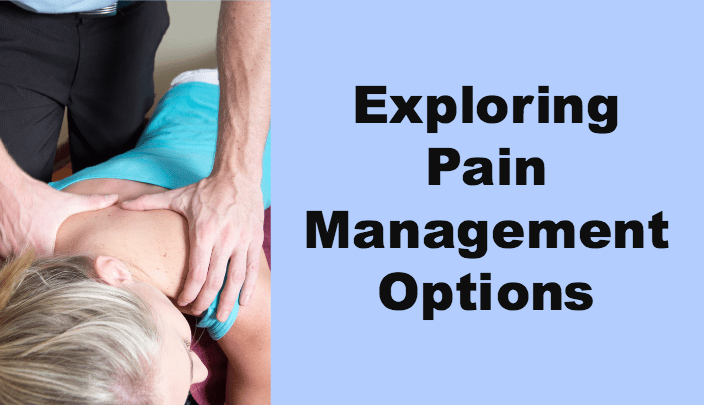Chiropractic for Pain Relief

Pain sufferers spend a lot of time researching different options for pain relief and pain management – with varying results.
What works well for one person does not for another, and there are many options available to achieve the goal of pain relief. Chiropractic treatments for pain relief are one such option that many says has been beneficial while others say did nothing or even made their pain worse. Our hope is that by the end of this article, you’ll have more information from which to make your own decision about whether chiropractic for pain relief is right for you.
Philosophy Behind Chiropractic Treatment
Dr. Ronda Sharman, DC, a chiropractor at Life Care Chiropractic and Wellness Center in Waldorf, Maryland, recently shared some insights into this pain relief option. Dr. Sharman is one of the more than 60,000 chiropractors in the U.S. utilizing chiropractic treatments to reduce pain, improve posture, increase flexibility and help to restore muscle balance in patients.
“Chiropractic is a health care profession that focuses on disorders of the musculoskeletal system and the nervous system. The nervous system controls everything in the body. It is constantly communicating with every cell in the body sending signals to regulate, restore, repair, and drive every little function. Messages start in the brain, travel through the spinal cord, leave the spine and then travel along nerves to muscles, organs, and glands,” explains Dr. Sharman.
“As chiropractors, we are uniquely trained to identify areas within the spine that may be causing irritation to the nervous system and help patients to cultivate a healthy nervous system so that the body can be as resilient as possible.”
The Components of Chiropractic Treatment
Once the problem has been identified, chiropractors utilize a procedure called spinal manipulation, or an adjustment, to restore proper spinal function. The manipulation is a gentle low force technique to restore proper mobility within the joints of the spine. This procedure has a positive effect on the nervous system. Although spinal manipulation is the key component of chiropractic care, most practitioners take a holistic approach and include other advice in their treatment programs. Dr. Sharman is one such practitioner, with massage therapy, rehabilitative therapy, exercise, and vitamin protocols to name a few services also offered at her practice.
Why Chiropractic is Popular for Pain Treatment
Chiropractic therapy is popular primarily for two big reasons: it is a cost-effective, safe alternative to other forms of treatment for chronic pain and it experiences a high rate of client satisfaction. Many pain sufferers do not want to use medication or undergo surgery. Spinal manipulation has been deemed an effective treatment for lower back pain and has been proven to reduce pain, advance physical therapy progress and decrease reliance on potentially addictive and harmful pain medications. The Agency for Health Care Policy and Research recommends chiropractic care as a first-line treatment for acute low back pain in adults.
The Benefits Experienced By Some Chiropractic Patients
PainPathways asked this question on its Facebook page recently – and while some respondents mentioned getting no relief or their pain worsening, many pain sufferers had positive things to say.
Why Chiropractic is Controversial For Pain Relief
While no pain relief approach is 100% successful for every person, chiropractic treatments have historically received a great deal of criticism. Some of the criticism may be based on false assumptions or anecdotes. Nonetheless, the most commonly mentioned critiques include:
– Lack of research and quality studies that prove the effectiveness
– Fewer years of medical training for chiropractors than traditional M.Ds
– A higher propensity of documented fraud than in other health care professions
– Pain condition worsening after chiropractic treatments
Many medical doctors actually do agree that chiropractic adjustments may be a good form of pain relief for the right pain conditions – particularly acute pain in the lower back and some types of neck pain. However, there is a great deal of criticism for the studies done in the past to provide evidence of the efficacy of chiropractic treatments for other pain conditions. As well, many critics would say that the most important factor in the usefulness of chiropractic treatments is not the nature of chiropractic as a profession, but the skill and sensibility of the particular chiropractor providing such treatment. There seem to be vast differences among service providers, and medical professionals who advocate chiropractic treatment caution about choosing the right chiropractor.
The Future of Chiropractic
Today, chiropractors are the third-largest group of health care providers, after physicians and dentists, who treat patients directly. AMA policy now states that it is ethical for physicians not only to associate professionally with chiropractors but also to refer patients to them for diagnostic or therapeutic services. Opinions are definitely changing.
As acceptance increases in the mainstream medical community, the number of chiropractors and the variety of disorders treated through chiropractic care is anticipated to increase. There is a great deal of research underway into the effectiveness of chiropractic treatment for more than just lower back pain. Clinical trials are being conducted nationwide, as more pain sufferers have concerns over the long-term use of non-steroidal anti-inflammatory medications and narcotic pain relievers. Sufferers, as a whole, are looking towards hands-on, drug-free approaches – and chiropractic for pain relief has the potential to be part of the solution.
PainPathways Magazine
PainPathways is the first, only and ultimate pain magazine. First published in spring 2008, PainPathways is the culmination of the vision of Richard L. Rauck, MD, to provide a shared resource for people living with and caring for others in pain. This quarterly resource not only provides in-depth information on current treatments, therapies and research studies but also connects people who live with pain, both personally and professionally.
View All By PainPathways






